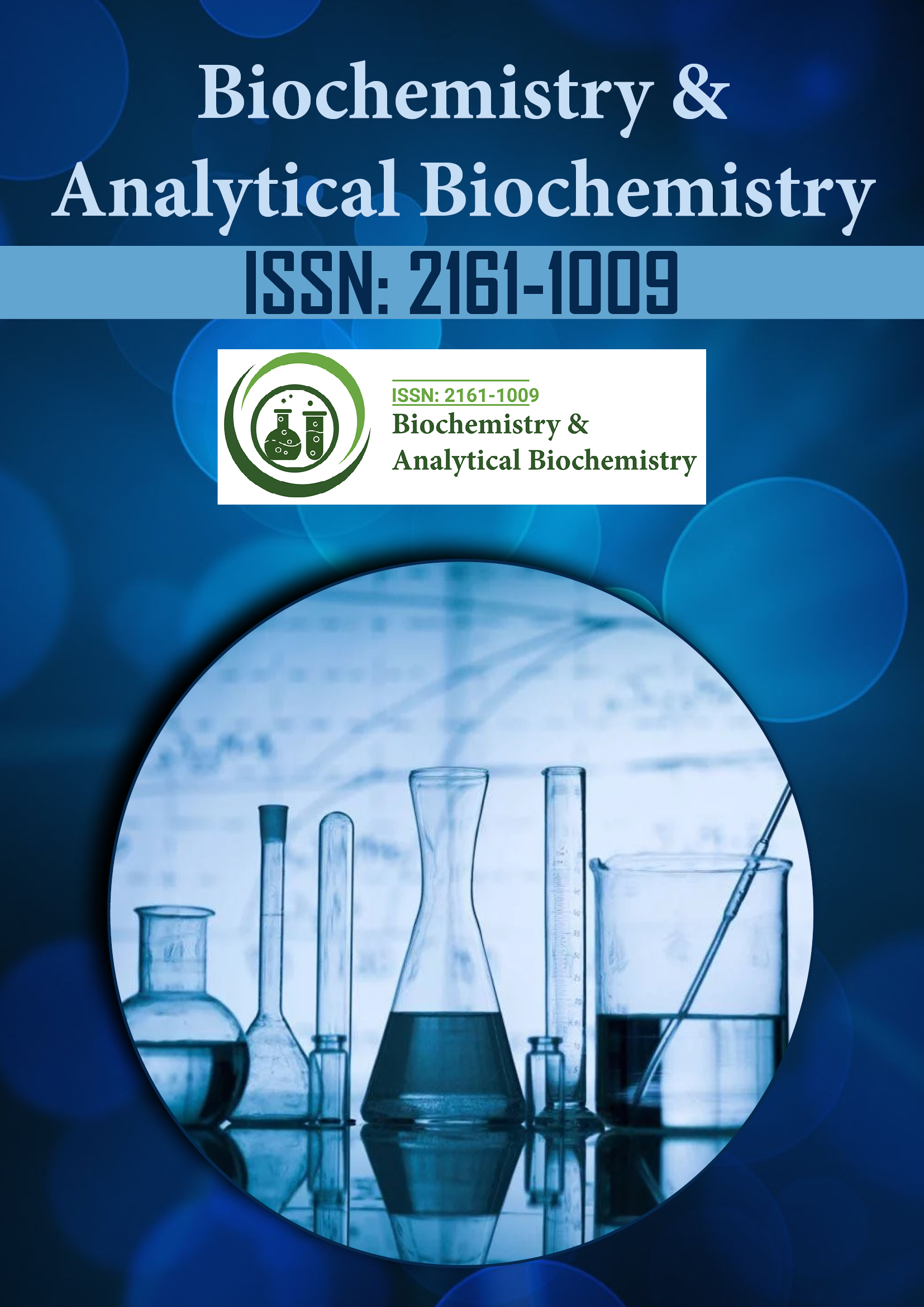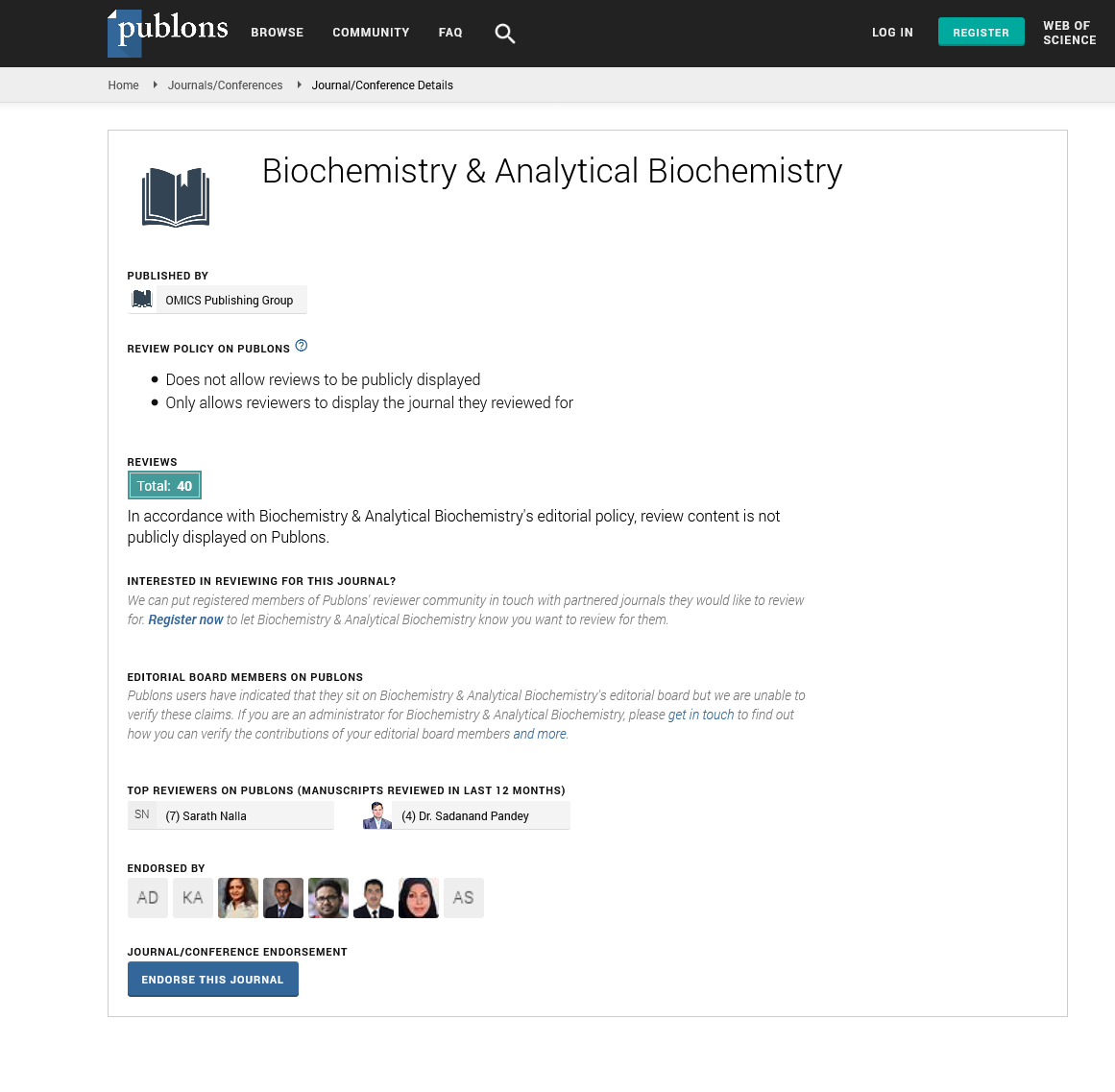Indexed In
- Open J Gate
- Genamics JournalSeek
- ResearchBible
- RefSeek
- Directory of Research Journal Indexing (DRJI)
- Hamdard University
- EBSCO A-Z
- OCLC- WorldCat
- Scholarsteer
- Publons
- MIAR
- Euro Pub
- Google Scholar
Useful Links
Share This Page
Journal Flyer

Open Access Journals
- Agri and Aquaculture
- Biochemistry
- Bioinformatics & Systems Biology
- Business & Management
- Chemistry
- Clinical Sciences
- Engineering
- Food & Nutrition
- General Science
- Genetics & Molecular Biology
- Immunology & Microbiology
- Medical Sciences
- Neuroscience & Psychology
- Nursing & Health Care
- Pharmaceutical Sciences
Commentary - (2025) Volume 14, Issue 1
Revisiting Redox Biology: The Role of Sulfur-Based Modifications in Cellular Metabolism
Clara Menendez*Received: 03-Mar-2025, Manuscript No. BABCR-25-28834; Editor assigned: 05-Mar-2025, Pre QC No. BABCR-25-28834 (PQ); Reviewed: 19-Mar-0005, QC No. BABCR-25-28834; Revised: 26-Mar-2025, Manuscript No. BABCR-25-28834 (R); Published: 02-Apr-2025, DOI: 10.35248/2161-1009.25.14.567
Description
The field of redox biology has been extensively characterized by the investigation of oxidative stress and the balance between prooxidant and antioxidant forces in cellular environments. While much emphasis has been placed on Reactive Oxygen Species (ROS), the role of Reactive Sulfur Species (RSS) has remained relatively obscure despite their critical roles in modulating biochemical reactions and signaling cascades. Emerging research suggests that sulfur-based post-translational modifications such as S-sulfhydration and sulfenylation may serve not only as markers of oxidative balance but also as functional regulators of protein activity, conformation and localization.
A key point in this discussion is the enzyme Cystathionine Gamma-Lyase (CSE), responsible for generating Hydrogen Sulfide (Hâ??S), an endogenously produced gaseous signaling molecule. CSE activity has traditionally been linked to cardiovascular health and inflammation, but recent evidence suggests that its byproducts may have broader implications in cellular metabolism, particularly through interaction with mitochondrial enzymes. One example is the influence of Hâ??S on complex IV of the electron transport chain, where it may act both as an inhibitor and a substrate, depending on its concentration. This dualistic behavior of sulfur compounds underscores a broader paradigm in redox biology: the contextual functionality of reactive species.
For instance, low levels of ROS and RSS promote adaptive cellular responses through transcription factors, while high levels lead to deleterious effects including DNA damage and protein denaturation. Different tissues may have varying sensitivities to oxidative and sulfhydryl stressors and these differences could potentially impact disease progression or susceptibility. The dynamic interplay between ROS and RSS in cellular environments requires a much more sophisticated model to capture these nuances.
Moreover, techniques used in redox biology must be reevaluated in light of the elusive nature of sulfur-based species. Most current assays lack the specificity and sensitivity to detect subtle shifts in RSS levels or to distinguish between closely related sulfur species. Advanced mass spectrometry approaches combined with fluorescent labeling strategies may offer a new frontier in the real-time monitoring of these dynamic changes in cellular environments. Furthermore, emerging technologies such as gene editing could be leveraged to selectively knock out or modulate genes involved in sulfur metabolism, providing powerful tools to interrogate the biological consequences of altered RSS levels.
In terms of clinical application, targeting sulfur redox pathways may open new therapeutic avenues. For instance, manipulating sulfhydration patterns in neurodegenerative diseases such as Parkinson's and Alzheimer's has shown promise in preliminary models. These interventions, however, require a deeper mechanistic understanding and refined delivery strategies to ensure specificity and safety. Furthermore, given the complexity of sulfur metabolism and its interaction with other redox pathways, combination therapies that modulate both sulfur and oxygen species may offer enhanced therapeutic efficacy, particularly in diseases driven by mitochondrial dysfunction.
In summary, the prevailing narrative in redox biology must expand to accommodate the nuanced role of sulfur-based modifications. This reappraisal not only enriches our understanding of cellular metabolism but also aligns with the growing need for precision therapeutics that consider underexplored biochemical pathways. The next decade of redox research should pivot toward integrative models that capture the interdependence of oxygen, nitrogen and sulfur species in shaping cellular fate and function. By embracing this complexity, we may uncover novel strategies for preventing and treating a wide range of diseases, from cardiovascular disorders to neurodegeneration, that are influenced by dysregulated redox signaling.
Citation: Menendez C (2025). Revisiting Redox Biology: The Role of Sulfur-Based Modifications in Cellular Metabolism. Biochem Anal Biochem. 14:567.
Copyright: © 2025 Menendez C. This is an open access article distributed under the terms of the Creative Commons Attribution License, which permits unrestricted use, distribution, and reproduction in any medium, provided the original author and source are credited.

